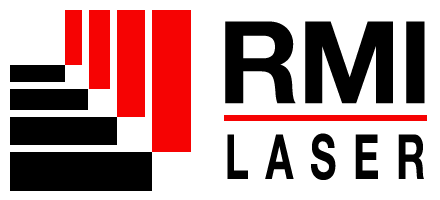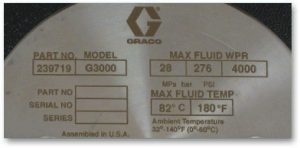Lasers have been around for over 50 years. Their applications are as expansive as their wavelengths and wattages. Laser Marking and Engraving is a widely expanding marketplace as users have seen the benefits of using lasers over conventional methods like Dot Peen for direct part marking. What are those benefits?
Dot Peen requires a blunt impact on the surface. File creation is limited, usually limited to only text and a data matrix code. Also, lasers are far less quiet and do not require ear plugs for operators or surrounding manufacturing cells. RMI Laser Marking Systems provide non-contact markings from beginning to end. The part simply needs to be placed under the laser at the proper focal height and the laser will etch the part without the need for consumables, washing or surface treatment.
Dot peen units actually displace the material and provide no visible contrast to the markings. This can make marking very hard to find or codes, like data matrices very difficult to read or get a grade A quality marking. Laser marking systems provide the darkest contrast onto a large variety of materials as the markings can be a surface anneal or a color change onto plastic. The laser’s focused energy creates the contrast on the surface and allows for grade A data matrices onto metals, plastics or ceramics.
Laser Marking Systems can apply several types of markings. The first is surface annealing, which is only a color change directly on the surface of the metal being marked. The second, for plastics, is called color changing. Same as annealing, it is directly on the surface of the material. The third is etching, which is slightly penetrating the substrates’ surface and typically has less contrast than annealed or color changed markings. The final marking type is engraving. Like etching, engraving penetrates the surface but goes much deeper; ranging from .003” and higher. Dot peen units can only create a deeper, hardly impacted engrave but only onto harder metals as plastics or ceramics will be damaged by such impact. Even further, Dot peens need a flat surface while laser markers have little concern for part geometry. With focal ranges of .25” to .5,” lasers can handle cylindrical shapes with ease. With the addition of a rotary chuck device, lasers can provide 360° markings.
The computer controlled interface driving the beam steering mirrors and the ability of lasers to ensure constant output provides marking consistency 99.9% of the time. It also allows for the marking of graphics, logos, photos, barcoding, any true type font style, or CAD based graphic needed. Dot peen can produce alpha-numerics and data matrix codes.
Lasers provide a marking spot as low as 15 microns giving them the ability to mark Hi-Resolution Images and Graphics or text as small as 100 microns tall. Dot peen can only handle basic alpha-numerics in a single style font type, with breaks and spaces between each peen.
Lasers have no consumption of anything other than electricity. Dot Peens require the replacement of the metallic tip after a specified period of time which means there is maintenance when using these machines daily. With lasers, there is no annual maintenance or consumables so you will always be up marking. In conclusion, laser markers are far more advanced and provide better quality markings than Dot Peens. They are non-impact and quiet to have in your manufacturing facility while also providing greater marking versatility. The advantages are clear and the choice is obvious.


